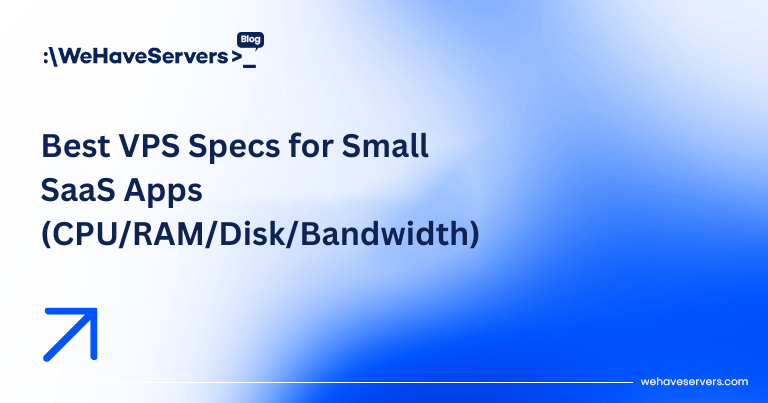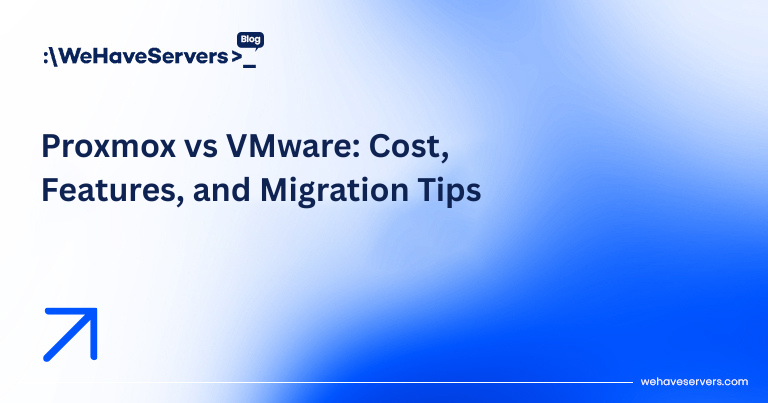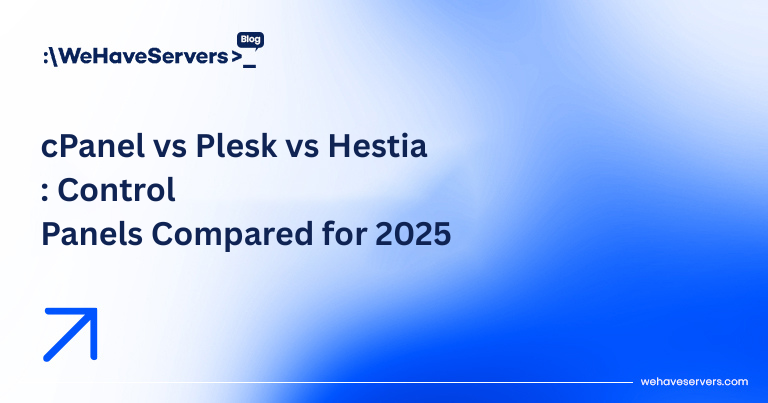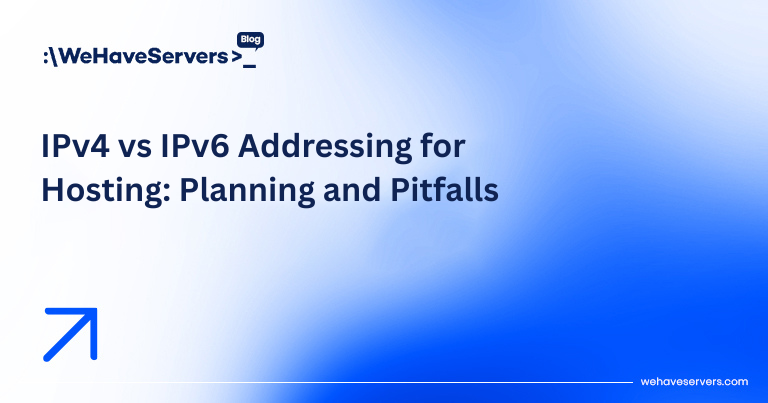
Best VPS Specs for Small SaaS Apps (CPU/RAM/Disk/Bandwidth)
Best VPS Specs for Small SaaS Apps (CPU/RAM/Disk/Bandwidth)
Launching a Software-as-a-Service (SaaS) application is easier than ever, but selecting the right infrastructure is still one of the hardest parts. For startups and small SaaS teams, the question usually comes down to: what VPS specs do we need? Choosing the wrong CPU, RAM, disk, or bandwidth profile can either result in wasted money (overprovisioning) or outages and slow performance (underprovisioning). This guide walks through how to plan VPS resources for small SaaS applications in 2025, balancing cost, scalability, and real-world workload demands.
🔹 CPU Requirements
The CPU determines how quickly your VPS can process requests, run application code, and handle concurrent users. Small SaaS apps typically don’t need dozens of cores at launch, but choosing the right CPU type matters.
Recommended Specs
- vCPUs: 2–4 vCPUs minimum for MVPs. Scale to 8+ if running CPU-heavy workloads (e.g., background jobs, analytics).
- CPU Type: Choose dedicated or pinned vCPUs over shared CPU if latency-sensitive. Modern AMD EPYC or Intel Xeon cores perform 2–3× faster than older CPUs.
- Clock Speed: Prioritize high clock speed (3.0+ GHz) for web/API response times.
Tip: If your SaaS app is built on Node.js, Django, or Rails, concurrency scales well with 4–8 vCPUs. For Go/Elixir, even 2 vCPUs can handle thousands of lightweight connections.
🔹 RAM (Memory)
RAM is often the first bottleneck in SaaS deployments, especially with modern frameworks and in-memory caching layers.
Recommended Specs
- Minimum: 4 GB for simple MVPs or staging.
- Production: 8–16 GB to support web server + database + caching tier.
- Scaling: 32 GB+ if hosting analytics-heavy apps, queues, or multiple tenants per VPS.
Memory planning rule of thumb: allocate 2 GB per web worker (e.g., Gunicorn, Puma) and reserve at least 50% of RAM for databases like PostgreSQL or MySQL.
🔹 Disk (Storage)
Storage performance is often overlooked, but SaaS workloads depend heavily on database IOPS and application file access.
SSD vs NVMe
- SATA SSD: 500–600 MB/s throughput. Fine for dev/test.
- NVMe SSD: 3–5 GB/s throughput with 5–10× lower latency. Essential for production SaaS.
Recommended Specs
- Disk Size: 100–250 GB for MVPs (OS + DB + logs).
- Growth: 500 GB–1 TB if storing user-uploaded files, analytics, or backups.
- RAID: Use RAID1 for redundancy if offered by the provider. For higher resilience, replicate DB volumes to secondary nodes.
Tip: Monitor disk I/O with iostat or iotop. SaaS outages often happen due to IOPS starvation, not running out of raw GB.
🔹 Bandwidth
Small SaaS apps rarely need 10 Gbps links at launch, but bandwidth planning affects costs and customer experience.
Recommended Specs
- Port Speed: 1 Gbps is standard; 10 Gbps recommended if expecting growth or heavy media use.
- Monthly Traffic: 2–5 TB/month for typical SaaS web apps. 10–20 TB/month if serving large files, APIs, or integrations.
- Billing Model: Flat-rate commit if steady traffic; 95th percentile burstable if usage is spiky.
Example: A SaaS invoicing platform with 5,000 users may only push ~1 TB/month. A video-processing SaaS could exceed 20 TB/month quickly.
🔹 Architecture Considerations
Specs alone aren’t enough. The way you structure your VPS environment matters.
- Single VPS (MVP): 4 vCPU, 8 GB RAM, 200 GB NVMe SSD, 3 TB bandwidth.
- Split Tier (Production):
- Web/App VPS: 4–8 vCPUs, 8 GB RAM, 100 GB NVMe.
- Database VPS: 4 vCPUs, 16 GB RAM, 250 GB NVMe RAID1.
- Scaling: Add caching (Redis/Memcached VPS) and background workers.
Tip: Always separate DB from app tier once you onboard paying customers. It improves both performance and security isolation.
🔹 Cost Optimization
- Start with smaller VPS plans and scale vertically before moving to clusters.
- Leverage snapshots and backups to avoid over-provisioning storage.
- Use autoscaling only when app architecture supports stateless horizontal scaling.
- Deploy monitoring early (Zabbix, Grafana, Prometheus) to rightsize resources.
In Romania/EU data centers, VPS costs range from €10–€30/month for entry-level (2 vCPU, 4 GB RAM) and €80–€150/month for production-ready specs (8 vCPU, 16 GB RAM, NVMe, 5 TB bandwidth).
🔹 Real-World SaaS Examples
Case 1: Small CRM SaaS
- Started on 2 vCPU / 4 GB VPS.
- Scaled to 4 vCPU / 16 GB RAM + dedicated DB VPS after 1,000 users.
- Monthly cost: ~€120.
Case 2: Analytics SaaS
- Launched on 8 vCPU / 32 GB RAM due to high-memory requirements.
- Heavy PostgreSQL indexing, required NVMe with RAID1.
- Monthly cost: ~€250–€300.
Case 3: Media SaaS
- Needed 10+ TB bandwidth/month for video transcoding.
- Used burstable billing with 1 Gbps port to save on steady traffic.
- Monthly cost: ~€500–€700.
✅ Conclusion
There’s no one-size-fits-all VPS plan for SaaS, but the principles remain clear: start small, monitor usage, and scale intelligently. For most small SaaS apps in 2025, the sweet spot is 4–8 vCPUs, 8–16 GB RAM, NVMe storage, and 3–5 TB bandwidth. Beyond that, split your architecture into web, DB, and caching tiers as customers grow. Choosing the right VPS specs upfront ensures your SaaS can scale smoothly without breaking budgets or SLAs.
At WeHaveServers.com, we offer VPS plans optimized for SaaS workloads with NVMe storage, dual-stack IPv4/IPv6, and scalable bandwidth — hosted in low-latency Romanian/EU data centers.
❓ FAQ
How many vCPUs does a small SaaS need?
Start with 2–4 vCPUs for MVPs, scale to 8+ as concurrency and workloads increase.
Is NVMe storage necessary?
Yes, for production databases and SaaS workloads. NVMe provides 5–10× lower latency than SATA SSDs.
How much bandwidth should I budget?
3–5 TB/month for typical SaaS. Media-heavy apps may require 10–20 TB/month or more.
Should I split DB and App VPS?
Yes. Separate DB tiers improve performance, resilience, and security once you scale beyond test users.
What’s the typical VPS cost for SaaS in Romania/EU?
€80–€150/month for production-ready VPS with 8 vCPUs, 16 GB RAM, NVMe storage, and 5 TB bandwidth.



